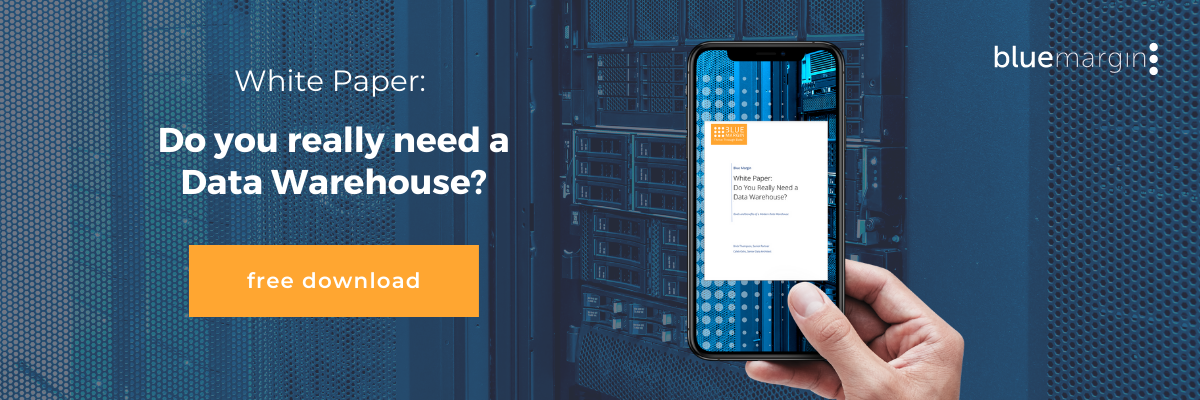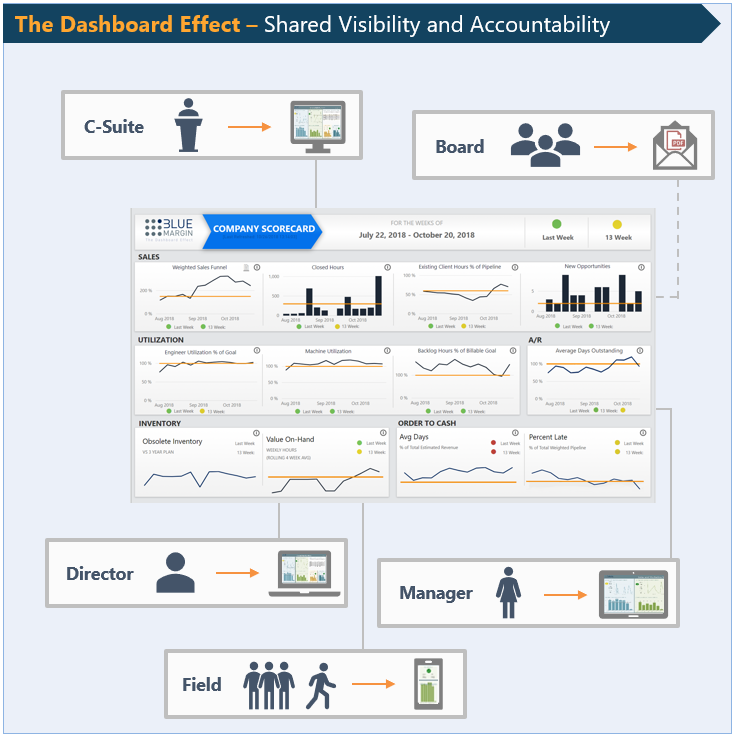In recent years, there is no business discipline that has moved to the forefront of the business community’s collective consciousness more than business intelligence.
The following chart illustrates Google search interest in “business intelligence” topics over the past 5 years.

With the increased recognition that business intelligence as a staple of consistent revenue growth and profitability, comes a series of challenges for business leaders. As with all emerging business terms, vendors, experts, and the media latch onto these keywords and phrases to position themselves closer to the center of a hot technology.
This leaves executives and IT analysts with a mountain of software options to sort through. These platforms range from end-to-end business intelligence solutions to point solutions that handle peripheral functions of business intelligence.
When you are tasked with leading the business intelligence initiative at your company, these defining challenges can slow your evaluation process, muddle internal conversations, and set you back years if you select the wrong business intelligence software for your business.
In the following article, I’ll give you a clear, actionable overview of what is and what is not business intelligence software. In addition, you’ll get a framework for comparing business intelligence software solutions to make the best decisions for your organization.
Business Intelligence – A Definition And An Introduction
First, what is business intelligence?
According to CIO.com, “Business Intelligence (BI) leverages software and services to transform data into actionable intelligence that informs an organization’s strategic and tactical business decisions.”
Secondly, why do companies implement Business Intelligence software?
This compelling quote from Chris Lukasiak, of Forbes, helps answer that question: “There’s no question—companies that successfully use business intelligence make better business decisions and are poised to outpace and outlast their competitors.”
Let’s expand on that answer and focus on a key term from the above definition—“actionable intelligence.”
Actionable intelligence means you have the information needed to make better business decisions faster, based on data. As a result, your data becomes a value-producing asset—instead of hiding in an inaccessible silo or spreadsheet—giving you a competitive advantage and driving superior outcomes.
What Is Business Intelligence Software?
As Business Intelligence plays an ever-increasing role in day-to-day business, the systems and software for harnessing your data are becoming increasingly accessible. Data collection is no longer the most challenging piece of the data puzzle. Separating signal from noise and communicating insights that trigger better decisions is where the real value lies, and this is where business intelligence software comes into play.
A Simple Framework For Comparing BI Solutions and Identifying Leaders
In their 2019 report, “Magic Quadrant for Analytics and Business Intelligence Platforms,” Gartner defines the five use cases used to define and assess product capabilities.
Agile, centralized BI provisioning
Supports an agile IT-enabled workflow, from data to centrally delivered and managed analytic content, using the platform’s self-contained data management capabilities.
Decentralized analytics
Supports a workflow from data to self-service analytics, and includes analytics for individual business units and users.
Governed data discovery
Supports a workflow from data to self-service analytics to system of record (SOR), IT-managed content with governance, reusability and promotability of user-generated content to certified data and analytics content.
OEM or embedded analytics
Supports a workflow from data to embedded BI content in a process or application.
Extranet deployment
Supports a workflow similar to agile, centralized BI provisioning for the external customer or, in the public sector, citizen access to analytic content.
An Example A Top Business Intelligence Software Provider
To see this framework in action, let’s look at Microsoft’s BI solution. Against these standards, Microsoft is once again recognized as a leader in analytics and business intelligence.
A comprehensive product vision, positive sales experience, and intuitive user experience contributing to high levels of customer satisfaction helped position Microsoft as a Magic Quadrant Leader among analytics and business intelligence platforms for the twelfth consecutive year.
Business Intelligence Software Takeaways
As a Microsoft-focused data analytics firm, we’d be overplaying our bias if we didn’t applaud the many companies increasing the availability of BI.
The good news is enterprise-grade BI software is becoming increasingly diverse and affordable. This recent Forbes article provides a concise rundown of the data visualization power-players. Power BI, Tableau, and Qlik are the most popular on the list (and rank highest on Gartner’s Magic Quadrant for Business Intelligence), and we’re excited to see additional up-and-comers in the market.
BI is no longer the sole domain of enterprises. In fact, with an ever-widening field of data visualization tools on the market, we’re seeing more nimble mid-market and small companies make the biggest strides with their data. If you haven’t yet jumped on the data train, we encourage you to take a look at the latest offerings.
Having managed businesses for decades (and having tried virtually every management tactic), we’re convinced that putting your data to work is the quickest, most affordable way to transform your business for greater efficiency, growth, and profitability.
Take a look at our Case Studies or our Manufacturing and Supply Chain Webinar for real-world examples of the impact data can deliver.





